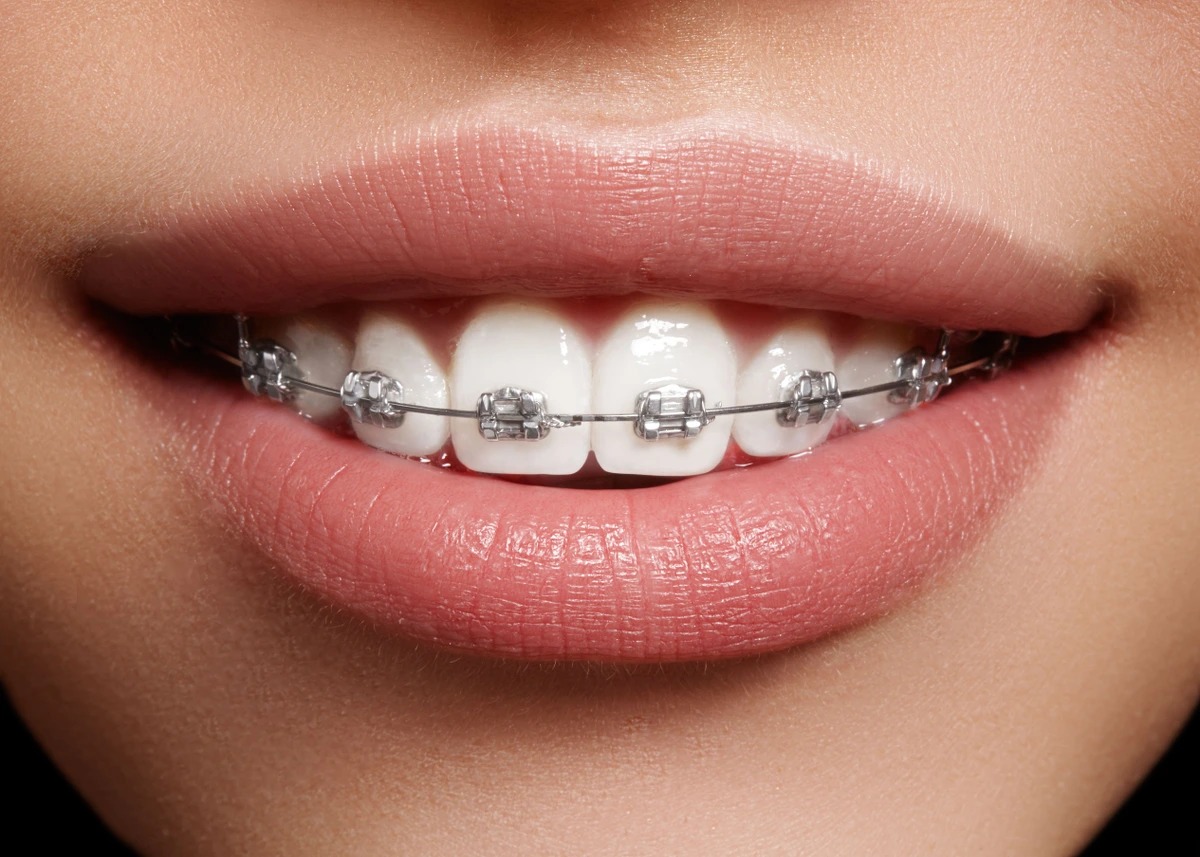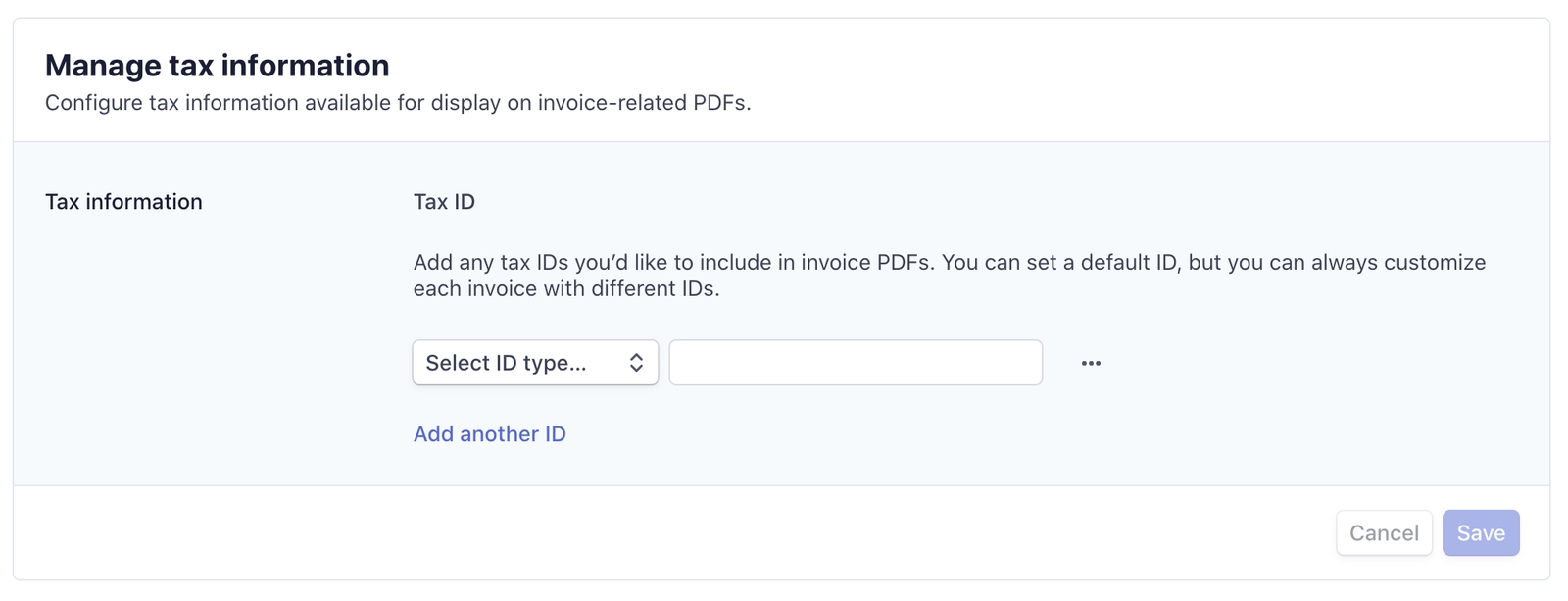Home>Finance>How Much Are Braces In California With Insurance?


Finance
How Much Are Braces In California With Insurance?
Published: November 20, 2023
Discover the cost of braces in California with insurance and explore financing options to make orthodontic treatment more affordable.
(Many of the links in this article redirect to a specific reviewed product. Your purchase of these products through affiliate links helps to generate commission for LiveWell, at no extra cost. Learn more)
Table of Contents
Introduction
Having a beautiful and confident smile can have a significant impact on your self-esteem and overall well-being. If you are considering getting braces to correct misaligned teeth or a bite issue, you may wonder about the cost and how insurance can help cover it. In this article, we will explore the topic of braces in California, specifically focusing on the cost with insurance.
Braces are orthodontic devices that use steady pressure to gradually move teeth into their proper position. They are commonly used to address issues such as crowded teeth, gaps, and misalignments. While braces are an effective treatment option, they can come with a substantial financial burden.
In California, one of the most populous states in the United States, the cost of braces can vary depending on factors such as the severity of the dental condition, the type of braces chosen, and the location of the dental provider. However, having insurance coverage can help ease the financial strain associated with orthodontic treatment.
Insurance coverage for braces in California can vary depending on the insurance provider and the specific plan. Some dental insurance plans may offer coverage for orthodontic treatment, while others may have limited coverage or exclude it altogether. It is crucial to thoroughly review your insurance policy or consult with your insurance provider to understand what braces-related expenses are covered.
Understanding Braces
Before delving into the cost of braces with insurance, it is important to have a basic understanding of what braces are and how they work. Braces consist of brackets, wires, and sometimes additional components such as elastic bands or headgear.
The brackets are small, typically made of metal or ceramic, and are bonded to the front surface of the teeth. The wires are then threaded through the brackets and adjusted periodically to apply pressure and gradually move the teeth into their desired positions. Over time, this process helps to align the teeth and correct any bite issues.
Orthodontic treatment with braces usually takes several months to a few years, depending on the complexity of the case. Regular visits to the orthodontist are necessary to monitor progress and make any necessary adjustments.
It is worth noting that advances in orthodontic technology have led to the development of alternative options such as clear aligners (e.g., Invisalign) and lingual braces, which are attached to the back surface of the teeth. These alternatives offer more discreet treatment options and may be suitable for certain individuals. However, they may come with different cost considerations compared to traditional braces.
Orthodontic treatment with braces is typically recommended for children and teenagers, as their jaws are still developing, and the teeth are more responsive to movement. However, braces can also be used for adults, although the treatment process may take longer due to the density of adult teeth.
Now that we have a better understanding of braces, let’s move on to explore how insurance coverage can help offset the cost of braces in California.
Insurance Coverage for Braces in California
Insurance coverage for orthodontic treatment, including braces, can vary significantly depending on the specific insurance plan in California. Some dental insurance plans offer coverage for orthodontics as part of their comprehensive coverage, while others may have separate orthodontic coverage with its own set of benefits and limitations.
If you have dental insurance in California, it is important to review your plan’s coverage details to understand what expenses related to braces are covered. Typically, insurance plans may cover a portion of the cost of braces, but it’s important to check the specifics of your plan, including any deductibles or limitations.
It is common for insurance plans to have a waiting period before orthodontic coverage begins, usually around 6 to 12 months. This waiting period ensures that individuals do not sign up for insurance solely to cover the cost of braces but instead allows for long-term dental care planning.
Additionally, insurance plans may have age restrictions for orthodontic coverage. While braces are commonly associated with children and adolescents, some plans provide coverage for adults as well. However, this may vary from one insurance provider to another.
It’s important to note that insurance plans may have a lifetime maximum coverage limit for orthodontics. This means that once the maximum limit is reached, the insurance will no longer cover the cost of any further orthodontic treatment. The lifetime limit can vary widely, so it’s crucial to check your insurance policy for this information.
When seeking insurance coverage for braces in California, it may also be helpful to consider dental discount plans. These plans are not insurance but can provide savings on various dental treatments, including orthodontic care. They typically involve paying an annual membership fee in exchange for discounted rates with participating dental providers.
Understanding your insurance coverage for braces is essential to manage your out-of-pocket expenses effectively. Be sure to consult with your insurance provider or review your policy details to gain clarity on coverage, limitations, waiting periods, and any other relevant information.
Factors that Affect the Cost of Braces with Insurance
When it comes to the cost of braces with insurance in California, several factors can influence the overall expenses. Understanding these factors will give you a clearer picture of what to expect and help you plan accordingly.
1. Type of Insurance Plan: The type of dental insurance plan you have plays a significant role in determining the cost of braces. Different insurance plans have varying coverage percentages and maximum benefit limits. Some plans may cover a higher percentage of the cost, while others may have more limited coverage.
2. Severity and Complexity of the Dental Condition: The severity of your dental condition and the complexity of the required orthodontic treatment can impact the cost of braces. More severe cases may require additional procedures or a longer treatment duration, which can result in higher costs.
3. Insurance Deductibles: Most dental insurance plans have a deductible, which is the amount you need to pay out-of-pocket before your insurance coverage kicks in. The deductible for orthodontic treatment can vary, and it’s important to factor this into your overall cost calculation.
4. In-Network vs. Out-of-Network Providers: Insurance plans often have a network of preferred dental providers. If you choose an orthodontist within your plan’s network, you may receive higher coverage and potentially lower out-of-pocket costs. However, if you choose an out-of-network provider, the coverage may be less, and you may be responsible for a larger portion of the expenses.
5. Additional Procedures or Appliances: Depending on your specific dental condition, you may require additional procedures or appliances in conjunction with braces. This could include the need for tooth extractions, jaw surgery, or the use of special appliances such as expanders or headgear. These additional treatments can add to the overall cost.
6. Location: The cost of braces can also vary depending on where you are located in California. Metropolitan areas tend to have higher costs than rural areas. It’s worth considering this factor when estimating the overall expenses.
7. Coverage Limitations: Insurance plans often have specific limitations on orthodontic coverage, such as age restrictions or lifetime maximums. These limitations can impact the overall cost and the duration of coverage.
It is important to keep in mind that even with insurance coverage, there may still be out-of-pocket expenses associated with braces. Be sure to review your insurance policy carefully, consult with your insurance provider, and obtain a detailed cost estimate from your orthodontist to have a clear understanding of the expected costs for your specific situation.
Average Cost of Braces in California with Insurance
The average cost of braces in California with insurance can vary depending on several factors, including the type of insurance plan, the severity of the dental condition, and the chosen orthodontic provider. While it is difficult to provide an exact figure, we can give you a general idea of what to expect.
On average, the cost of braces in California can range from $3,000 to $7,000 for a standard treatment. However, it’s important to note that this estimate may not include additional procedures or appliances that may be necessary for more complex cases. The actual cost can be significantly higher in such situations.
Insurance coverage can help offset a portion of the cost of braces. Generally, dental insurance plans in California may cover anywhere between 25-50% of the total expenses, up to a specific lifetime maximum. The coverage percentage and maximum limit can vary depending on the specific plan.
For example, if the total cost of braces is $5,000 and your insurance plan provides 50% coverage, you could potentially be responsible for $2,500 out-of-pocket. However, it’s crucial to consider your insurance deductible, as you may need to pay that amount before your coverage kicks in.
It’s worth noting that insurance coverage is typically provided as a reimbursement. This means that you will need to pay the orthodontist upfront and then submit a claim to your insurance company for reimbursement of the covered portion. The reimbursement process can vary, so it’s important to familiarize yourself with your insurance plan’s procedures.
Remember, the figures provided here are general estimates and can vary based on individual circumstances. It is always recommended to obtain a detailed cost estimate from your orthodontist and consult with your insurance provider to get a precise understanding of the expected cost with insurance coverage.
Additionally, it is worth exploring any potential financing options available through your orthodontist or external financing companies. Many orthodontic practices offer installment plans or financing options to help make the cost of braces more manageable.
Now that we have discussed the average cost of braces in California with insurance, let’s explore the different types of braces and their associated costs.
The Types of Braces and Their Costs with Insurance
When it comes to braces, there are various types available, each with its own distinct features, advantages, and costs. The type of braces you choose will influence the overall cost of treatment, even with insurance coverage. Let’s explore the different options and their associated costs.
1. Metal Braces: Metal braces are the traditional and most common type of braces. They consist of metal brackets and wires. Metal braces are usually the most affordable option, and many insurance plans provide coverage for this type of treatment. With insurance, the out-of-pocket expenses for metal braces can be significantly reduced.
2. Ceramic Braces: Ceramic braces are similar to metal braces but use tooth-colored or clear brackets. They are less noticeable than metal braces, making them popular among individuals who want a more aesthetic option. However, ceramic braces tend to be more expensive than metal braces as the materials used are of higher quality. Insurance coverage for ceramic braces may vary, so it is essential to review your plan details.
3. Lingual Braces: Lingual braces are similar to traditional metal braces but are attached to the back surface of the teeth, making them virtually invisible from the outside. Lingual braces are custom-made for each patient, resulting in higher costs compared to traditional braces. Insurance coverage for lingual braces may be similar to that of metal braces, but it’s important to check with your insurance provider.
4. Invisalign: Invisalign is a popular alternative to traditional braces. It consists of a series of clear aligners that gradually straighten the teeth. Invisalign aligners are removable, making them more convenient for eating and oral hygiene. However, Invisalign tends to be more expensive than traditional braces, and insurance coverage may vary. Some insurance plans provide coverage for Invisalign, but the coverage amount and any limitations should be verified before proceeding.
5. Self-Ligating Braces: Self-ligating braces work similarly to traditional braces but use a different mechanism to hold the wires in place. Self-ligating braces can offer shorter treatment times and fewer required adjustments. These braces can have a higher upfront cost compared to traditional braces, and insurance coverage may be similar to metal braces.
It’s important to remember that the cost of braces, even with insurance coverage, can still vary depending on the complexity of your dental condition and any additional procedures or appliances required. Your orthodontist will provide a personalized treatment plan and cost estimate based on your specific needs.
Lastly, it’s worth noting that while insurance coverage can help offset the cost of braces, there may still be potential out-of-pocket expenses such as deductibles, co-pays, or any costs beyond the insurance coverage limit. Be sure to review your insurance policy, discuss the coverage details with your insurance provider, and consult with your orthodontist to understand the full financial implications of your chosen braces treatment.
How to Find Affordable Braces with Insurance in California
Getting braces can be a significant investment, but there are strategies you can employ to find affordable options, even with insurance coverage. Here are some tips to help you navigate the process and find affordable braces in California:
1. Review Your Insurance Plan: Start by thoroughly reviewing your dental insurance plan to understand what orthodontic treatments are covered and the extent of the coverage. Look for any limitations, waiting periods, or lifetime maximums that may affect your expenses.
2. Choose an In-Network Provider: Opt for an orthodontist who is in-network with your insurance plan. In-network providers have pre-negotiated rates, which can result in lower out-of-pocket costs for you. Check with your insurance company for a list of network providers in your area.
3. Get Multiple Consultations: Seek opinions and cost estimates from different orthodontists. This will give you a better idea of the average cost of treatment and allow you to compare prices. Make sure to inquire about any potential discounts or payment plans they offer.
4. Consider Treatment Plans: Discuss with your orthodontist about different treatment plans and options that may be more cost-effective. They might suggest alternatives or phased treatments that can help reduce expenses while still achieving the desired orthodontic results.
5. Utilize Flexible Spending Accounts (FSAs) or Health Savings Accounts (HSAs): If available, consider using an FSA or HSA to pay for braces. These accounts allow you to set aside pre-tax funds for medical expenses, including orthodontic treatment, helping to reduce the overall cost.
6. Explore Dental Discount Plans: Research dental discount plans in California that offer discounted rates for orthodontic treatment. While these plans are not insurance, they can provide savings on braces and other dental procedures. Evaluate the benefits and potential savings before deciding to enroll.
7. Ask About Financing Options: Inquire about installment plans or financing options offered by your orthodontist. Some practices may provide in-house financing or partner with external financing companies that offer affordable payment plans. This can help spread out the cost of braces over time.
8. Take Care of Your Oral Health: Prioritize good oral hygiene to prevent any additional dental problems that may arise during or after orthodontic treatment. Regular brushing, flossing, and dental check-ups can help ensure that your treatment stays on track and minimize the need for additional procedures, which can increase costs.
By following these tips, you can make the process of finding affordable braces with insurance in California more manageable. Remember to communicate openly with your insurance provider and orthodontist to gain a clear understanding of the costs, coverage, and available payment options.
Finally, keep in mind that the cost of braces is an investment in your oral health and self-confidence. It’s essential to prioritize quality care and choose the best treatment option that aligns with your needs and budget.
Conclusion
Braces can be a life-changing investment that not only enhances your smile but also improves your dental health and overall well-being. In California, the cost of braces with insurance can vary depending on multiple factors, including the type of insurance plan, the severity of your dental condition, and the chosen orthodontic provider. Understanding these factors and exploring strategies to find affordable options is crucial in making braces more accessible.
Begin by familiarizing yourself with the coverage details of your dental insurance plan. Check if orthodontic treatment, including braces, is covered, and understand the extent of the coverage, any waiting periods, and limitations. Insurances typically cover a portion of the cost, but it’s important to consider deductibles, in-network providers, and lifetime maximums.
When seeking affordable options, consider consulting multiple orthodontists to compare cost estimates and treatment plans. Opt for in-network providers who have negotiated rates with your insurance plan, helping to reduce out-of-pocket costs. It’s also worth exploring financing options, flexible spending accounts (FSAs), or dental discount plans that can provide additional savings.
Remember that the cost of braces is an investment, and quality care should be prioritized. While affordability is essential, ensure that you choose an orthodontist who possesses the expertise and experience needed to deliver the desired results. Maintaining good oral hygiene throughout your orthodontic journey will also help prevent any additional dental issues that may increase costs.
In conclusion, by understanding your insurance coverage, exploring options, and being proactive in managing your expenses, you can find affordable braces with insurance coverage in California. Take the time to research and consult with professionals to make informed decisions about your orthodontic treatment. With the right planning and financial arrangements, you can achieve a straighter, healthier smile and enjoy the lifelong benefits of well-aligned teeth.














